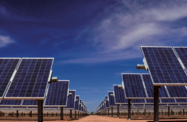The launch of the first phase of operations at the Bui dam hydroelectric project in May marked a key step forward for meeting Ghana’s rising demand for electricity.
Although avoiding the troubles that have beset nearby Nigeria’s electricity sector, Ghana has nonetheless faced a struggle to keep pace with demand for power, which is estimated at 1400 MW and rising at a steady 10% per year, according to government figures. Ghana’s rapid economic growth in recent years has left the state unable to provide customers with a constant power supply, resulting in regular brownouts across the country.
Having spent years on the drawing board, the new dam project, which is located at the southern end of Bui National Park, will ease pressure on Ghana’s national grid. The first unit is generating 133 MW of hydroelectric power, which will rise to 400 MW once the project is completed. Under the project timeline, additional turbines will be installed by the end of 2013, while other work on infrastructure to support the plant is expected to continue into the second quarter of 2014.
The Bui dam moved off the drawing board in 2007 when an agreement was signed with China’s Sinohydro to build the facility. The project was given a price tag of $622m at the time, which included the dam, power-generating capacity to be installed in phases, support functions and costs for clearing land and resettling locals.
Hydroelectric power has long been central to Ghana’s development, with the Bui project marking the third such dam. The first hydroelectric facility, the Akosombo dam, was built between 1961 and 1965 shortly after independence and led to the creation of the world’s largest man-made lake, and was followed by a second venture in Kpong some years later. Akosombo still accounts for more than half of Ghana’s electricity generation.
The Bui project’s timing threw up a number of challenges. Officials found themselves in search of funding at the height of the global financial crisis when the international credit markets had seized up and finance was becoming more costly. Funding was eventually secured by a concessionary loan, together with credit from both the Chinese government and the Export-Import Bank of China (China Exim Bank), while the Ghanaian government itself channelled $60m into the dam. While the project has now been calculated to cost $168.4m more than original estimates, Ghana was able to secure additional funding from China Exim Bank.
Although the Bui dam is spearheading Ghana’s efforts to boost power, work is under way on a number of other projects which will play a part in producing 660 MW of extra capacity by the second half of 2014. New power plants, which are expected to be built in the coming years, will also support Ghana’s efforts to close the gap between supply and rising demand for electricity.
Other projects currently under way aimed at boosting capacity next year include the Takoradi T3 combined-cycle venture, which will add a further 130 MW to the system using gas pumped in from the associated deposits at the nearby Jubilee oil field. The Kpone, another plant under construction, will provide an extra 200 MW.
The Takoradi 2 power plant further afield is also earmarked for an expansion, which will boost capacity at the facility from 220 MW to 330 MW. The project is set to be undertaken by the National Energy Company of Abu Dhabi as an independent power project, under government contract. The Volta River Authority, the state electricity company, also plans to sell $500m in bonds to pay for four proposed projects that will add 700 MW. The authority said in late 2012 it was considering a listing on Ghana’s stock exchange to raise additional funds.
Longer term, the government hopes that offshore exploration will result in sufficient natural gas to ease the pressure of maintaining pace with growing demand.
After a number of delays, initial infrastructure to ship extracted gas from wellhead to basic processing facilities is now expected to be in place by September, according to local media reports. The rolling out of the infrastructure, which plays a pivotal part in power sector operations, will be widely welcomed. However, a series of lengthy waits has also served as a reminder that delays and rising demand combine to create a challenging climate for moving new projects forward.

